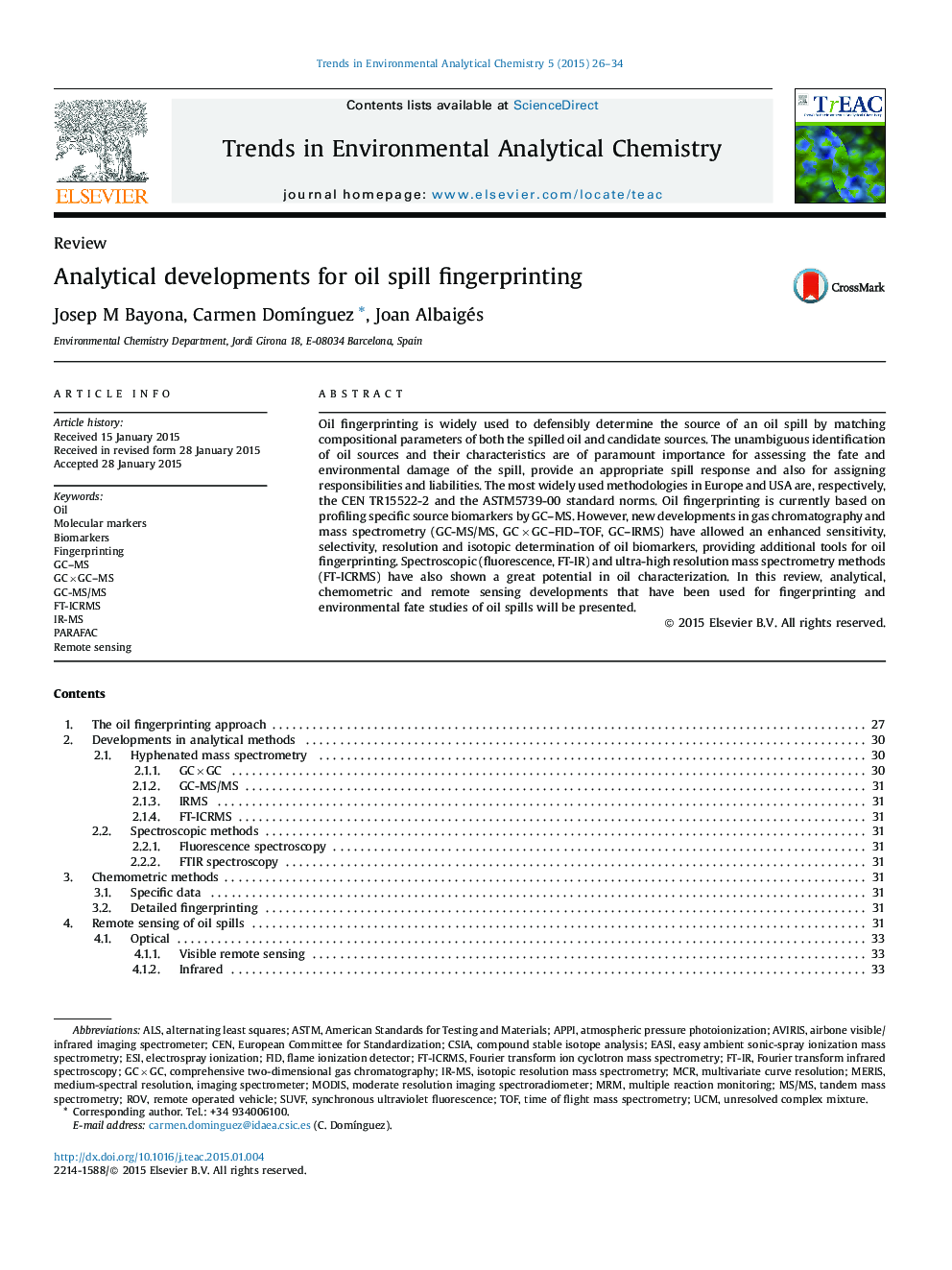| کد مقاله | کد نشریه | سال انتشار | مقاله انگلیسی | نسخه تمام متن |
|---|---|---|---|---|
| 1250044 | 1495955 | 2015 | 9 صفحه PDF | دانلود رایگان |
• Ratios between refractory biomarkers: a robust tool for oil spill fingerprinting.
• Hyphenated MS provide enhanced capabilities for oil spill characterization.
• Spectroscopy can be satisfactorily used in remote sensors for oil spill recognition.
Oil fingerprinting is widely used to defensibly determine the source of an oil spill by matching compositional parameters of both the spilled oil and candidate sources. The unambiguous identification of oil sources and their characteristics are of paramount importance for assessing the fate and environmental damage of the spill, provide an appropriate spill response and also for assigning responsibilities and liabilities. The most widely used methodologies in Europe and USA are, respectively, the CEN TR15522-2 and the ASTM5739-00 standard norms. Oil fingerprinting is currently based on profiling specific source biomarkers by GC–MS. However, new developments in gas chromatography and mass spectrometry (GC-MS/MS, GC × GC–FID–TOF, GC–IRMS) have allowed an enhanced sensitivity, selectivity, resolution and isotopic determination of oil biomarkers, providing additional tools for oil fingerprinting. Spectroscopic (fluorescence, FT-IR) and ultra-high resolution mass spectrometry methods (FT-ICRMS) have also shown a great potential in oil characterization. In this review, analytical, chemometric and remote sensing developments that have been used for fingerprinting and environmental fate studies of oil spills will be presented.
Journal: Trends in Environmental Analytical Chemistry - Volume 5, February 2015, Pages 26–34
